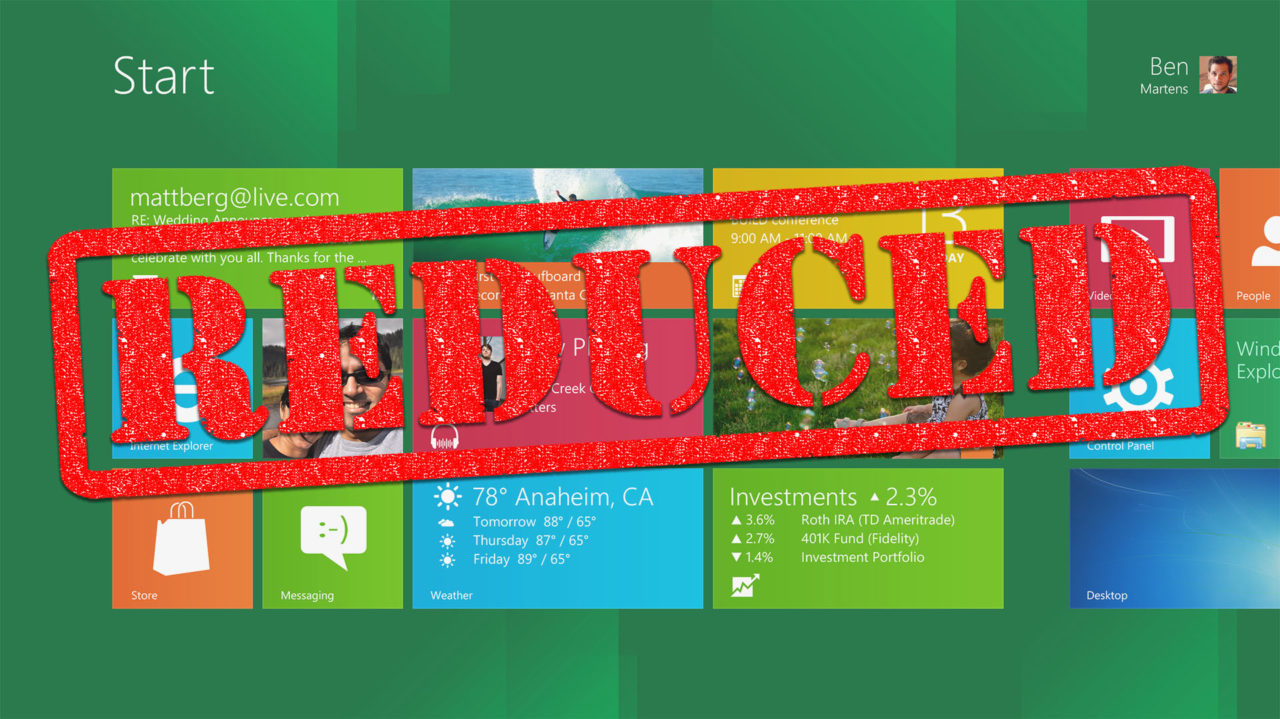Microsoft Cutting Windows 8.1 Licensing Costs by 70% for Entry Level Devices

One of new CEO Satya Nadella’s first major moves has just hit the press. According to Bloomberg, Microsoft will cut the licensing price of Windows 8.1 by 70 percent for manufacturers producing low-cost computers and devices. The price cut is in direct response to heated competition in the entry-level market with devices like Google-based Chromebooks.
The license cost for Windows 8.1 will fall to $15 for manufacturers who preinstall the operating system on devices that retail for less than $250. That’s down from a $50 license fee under the previous pricing scheme. Sources familiar with Microsoft’s plans say that the company is imposing no limits on device type, size, or capabilities to qualify for the reduced fee, other than the device’s retail price.
While Microsoft has yet to comment publicly on the report, the company likely hopes that this move will help it and its hardware partners recover market share in the low-cost market segment, which has been increasingly dominated by Chromebook PCs and Android-based tablets. Assuming that the savings in the licensing costs are passed on to the consumer, small Windows-based tablets for $35 less than they sell for now would make for a compelling consumer option, putting something like the well-reviewed Dell Venue 8 Pro near the $200 mark.
Further, any decision that moves more Windows devices into consumer hands will also be good for the Windows 8 division, which has seen slower adoption that its predecessor, Windows 7. Although announcing earlier this month that it had sold more than 200 million licenses of Windows 8 to date, Microsoft knows well that its latest operating system trails expectations significantly.
The company is therefore readying responses from multiple angles. In addition to its attempt to attract more buyers with lower costs, Microsoft is also relenting on some of the more controversial features introduced in Windows 8. An update for Windows 8.1, due this spring, will reintroduce greater controls for users not using a touch interface, such as right-click menus and a boot-to-desktop option. The company is also reportedly considering a return of the full-fledged Start Menu for Windows 9, expected next year.
We’re still waiting for Microsoft to officially comment on Bloomberg‘s report, and there’s no word yet on when the new pricing will go into effect, or when consumers might see related price drops.
















